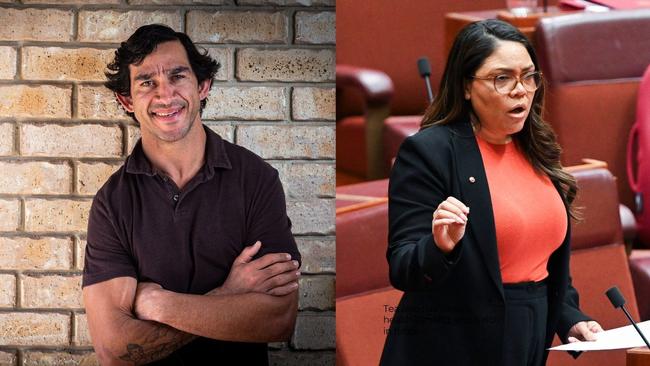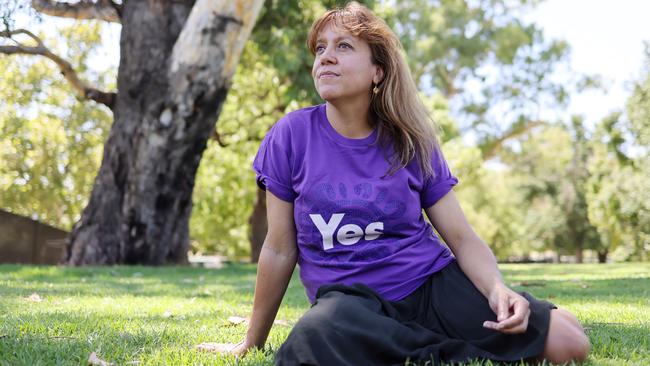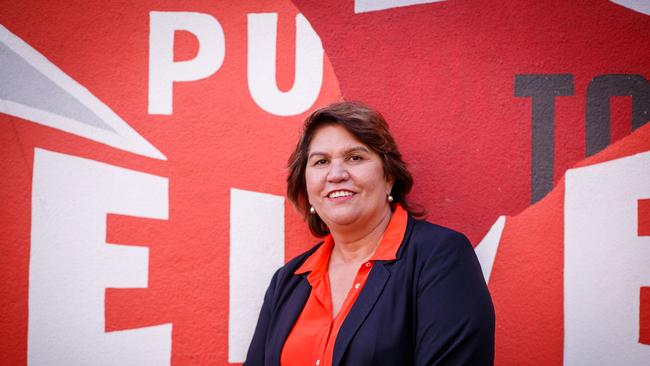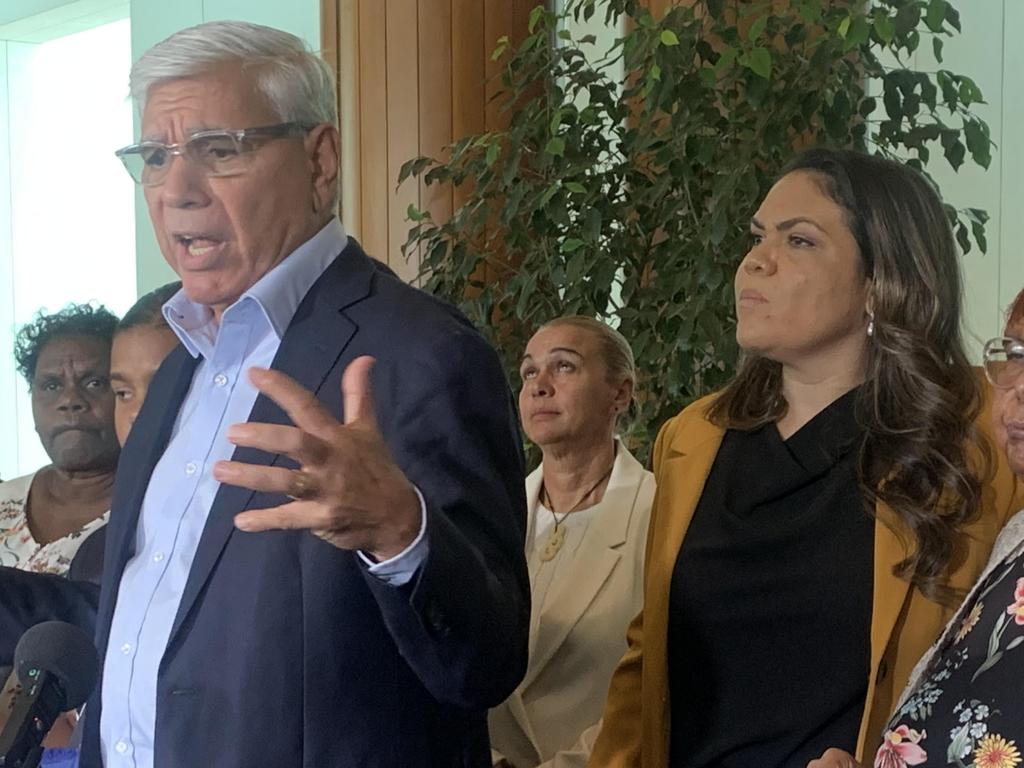Indigenous voice to parliament pamphlets: Yes and No supporters state their referendum case
It’s the clearest communication yet on the Indigenous voice to parliament, with both sides spelling out their reasons. But which is more convincing?

It’s the clearest communication yet on the Indigenous voice to parliament, with both sides spelling out their reasons in pamphlets to be mailed to 12.5 million Australian households before referendum polling day. Which will prove more convincing?
The Yes case: what is in the voice pamphlet
Vote Yes for a better future for Aboriginal and Torres Strait Islander people and all Australians. Vote Yes for unity, hope and to make a positive difference Voting Yes is about:
‘Recognition’
Recognising Aboriginal and Torres Strait Islander people in our Constitution and paying respect to 65,000 years of culture and tradition.
‘Listening’
Listening to advice from Aboriginal and Torres Strait Islander people about matters that affect their lives, so governments make better decisions.
‘Better results’
Making practical progress in Indigenous health, education, employment and housing, so people have a better life. It’s a change only you can make happen. Vote Yes to an idea that comes directly from Aboriginal and Torres Strait Islander people themselves: Constitutional Recognition through a voice.


‘What is the voice?’
The voice will be a committee of Aboriginal and Torres Strait Islander people who will give advice to the parliament and government on issues that affect their community.
It will include Indigenous Australians from every state and territory, the Torres Strait Islands and representatives from the regions and remote communities.
Members of the voice will be chosen by Aboriginal and Torres Strait Islander people in their local area and serve for a fixed period.
‘Why we need it’
There are big challenges facing Aboriginal and Torres Strait Islander people:
■ A life expectancy 8 years shorter than non-Indigenous Australians.
■ Worse rates of disease and infant mortality.
■ A suicide rate twice as high.
■ Fewer opportunities for education and training.
‘How the voice will work’
The voice is about advice. When governments listen to people about issues that affect them, they:
■ Make better decisions.
■ Get better results.
■ Deliver better value for money.
The Voice will give advice on key issues facing Aboriginal and Torres Strait Islander people, from better infant health to improving services in remote areas. Parliament and Government will still be responsible for all laws, programs and funding.
‘Key reasons to vote Yes’
1. This idea came directly from Aboriginal and Torres Strait Islander people
2. Constitutional recognition for concrete results
3. Ensure people have a better life
4. Bring our country together
5. Save money
6. The time is now
7. Practical advice that works
8. Making government work better
Who is quoted in the Yes pamphlet?
‘When people on the ground are listened to and engaged, better laws and policies are made. Advice from the voice will make our decisions and directions more informed and more successful. Recognition in the Constitution will help heal our nation’
Labor senator Patrick Dodson
‘Our young people deserve the chance to be their best. I work closely with schoolkids in the Yarrabah community in Queensland. I’ve seen the obstacles they face. Nobody understands that better than their local community. Giving them a say will mean more of our kids reach their potential. That’s what the voice is about’
Rugby league champion Johnathan Thurston
‘Our people have spent decades campaigning for the opportunity of a better life. We’ve never been more determined or more united. The voice is our best shot, let’s take it’
Filmmaker Rachel Perkins

‘When you involve people, you make better decisions and the money you spend goes where it’s needed most: to the people on the ground’
Uluru Dialogues co-chair Pat Anderson
‘I know the voice won’t fix everything overnight but I feel like it’s the opening of a pathway to make sure we are included and respected in decision-making on issues that impact us’
AFL great Eddie Betts
‘The voice is a big idea but not a complicated one. It is low risk for a high return… The voice will provide a practical opportunity for First Peoples to give informed and coherent and reliable advice to the parliament and the government’
Former High Court chief justice Robert French
‘Voting Yes is a chance for all Australians to celebrate the contribution Aboriginal and Torres Strait Islander peoples have made to our country and to help the next generation chase their dreams. Let’s grab this moment with both hands’
Tennis champion Evonne Goolagong Cawley
Another big name, who has spoken out in favour of the voice, though is not featured in the pamphlets, is actor Cate Blanchett, who has said publicly: “We have this incredible opportunity to embrace our unique history, shared history, you know, with all of its missteps and all of its successes, to actually evolve into a really modern democracy, like New Zealand, like Canada.”
In early August, Sydney-born rock act GANGgajang released a song in support of the Indigenous voice referendum, marking the first new music to be issued by a notable Australian band for the Yes campaign.
Titled Speak To Me, the track features two distinctive collaborators in didgeridoo player William Barton and actor Jack Thompson.
The No case: what the pamphlets say
This referendum is not simply about ‘recognition’. This voice proposal goes much further. If passed, it would represent the biggest change to our Constitution in our history. It is legally risky, with unknown consequences. It would be divisive and permanent. If you don’t know, vote no.
‘Risky’
We all want to help Indigenous Australians in disadvantaged communities. However, this voice is not the answer and presents a real risk to our system of government. This voice specifically covers all areas of “executive government”. This means no issue is beyond its reach. The High Court would ultimately determine its powers, not the parliament.
It risks legal challenges, delays and dysfunctional government.
‘Unknown’
No details have been provided on how members of the voice would be chosen or how it would operate. Australians are being asked to vote first before these details are worked out. Australians should have details before the vote, not after. We don’t know how it will work, we don’t know who will be on it, but we do know it will permanently divide us as Australians. Some voice supporters say this would just be a first step to reparations and compensation and other radical changes. So, what would come next?
‘Divisive’
Enshrining a voice in the Constitution for only one group of Australians means permanently dividing our country. It creates different classes of citizenship through an unknown body that has the full force of the Constitution behind it. Many Indigenous Australians do not support this.
‘Permanent’
Putting a voice in the Constitution means it’s permanent. We will be stuck with negative consequences.
‘Ten reasons to vote No’
1. This voice is legally risky
2. There are no details
3. It divides us
4. It won’t help Indigenous Australians
5. No issue is beyond its scope
6. It risks delays and dysfunction
7. It opens the door for activists
8. It will be costly and bureaucratic
9. This voice will be pemanent
10. There are better ways forward
Who is quoted in the No pamphlet?
‘I would foresee a decade or more of constitutional and administrative law litigation arising out of a voice’
Former High Court judge Ian Callinan
‘How can Australians possibly agree to something where we don’t know the detail?’
Liberal senator Kerrynne Liddle

‘This voice will not unite us, it will divide us by race’
Liberal senator Jacinta Nampijinpa Price
‘The inclusion of the proposed s 129 would mean that we become a nation where, whenever we or our ancestors first came to this country, we are not all equal’
Former Federal Court judge David Jackson
‘We’re all Australians. And that’s the way it should end up. It shouldn’t be divided by this so-called Voice which is going to split this country right down the centre’
Central Arrente senior custodian Ian Conway
‘A national voice cannot speak for country’
Australians for Unity board member Nyunggai Warren Munduine
‘The voice will be able to speak to all parts of the government, including the cabinet, ministers, public servants, and independent statutory offices and agencies – such as the Reserve Bank...It can’t shut the voice up’
Professors Megan Davis and Gabrielle Appleby
‘I think it’s fatally flawed because what it does is retain the full range of review of executive action. This means the voice can comment on everything from submarines to parking tickets…We will have regular judicial interventions’
Professor Greg Craven

‘The voice will almost certainly become a lightning rod for protracted debate about a vast array of current issues. Nearly every matter of current concern on the national agenda will be seen as having an Indigenous component of some kind’
Former WA Supreme Court judge Nicholas Hasluck
‘This is the first step, it’s a vital step and it puts all the explanation behind it. ‘Pay the Rent’ for example, how do we do that in a way that is transparent and that actually sees reparations and compensation to Aboriginal and Torres Strait Islander people…?
Referendum Working Group member Thomas Mayo
‘Australians need to understand that the voice will be used to support the demands for recognition of coexisting sovereignty, a Makarrata commission designed to produce a treaty and monetary compensation, and a rewriting of Australian history… The potential for great irremediable harm to Australian society means the voice should never be incorporated into the Australian constitution…’
Former NSW Supreme Court judge Terence Cole





To join the conversation, please log in. Don't have an account? Register
Join the conversation, you are commenting as Logout